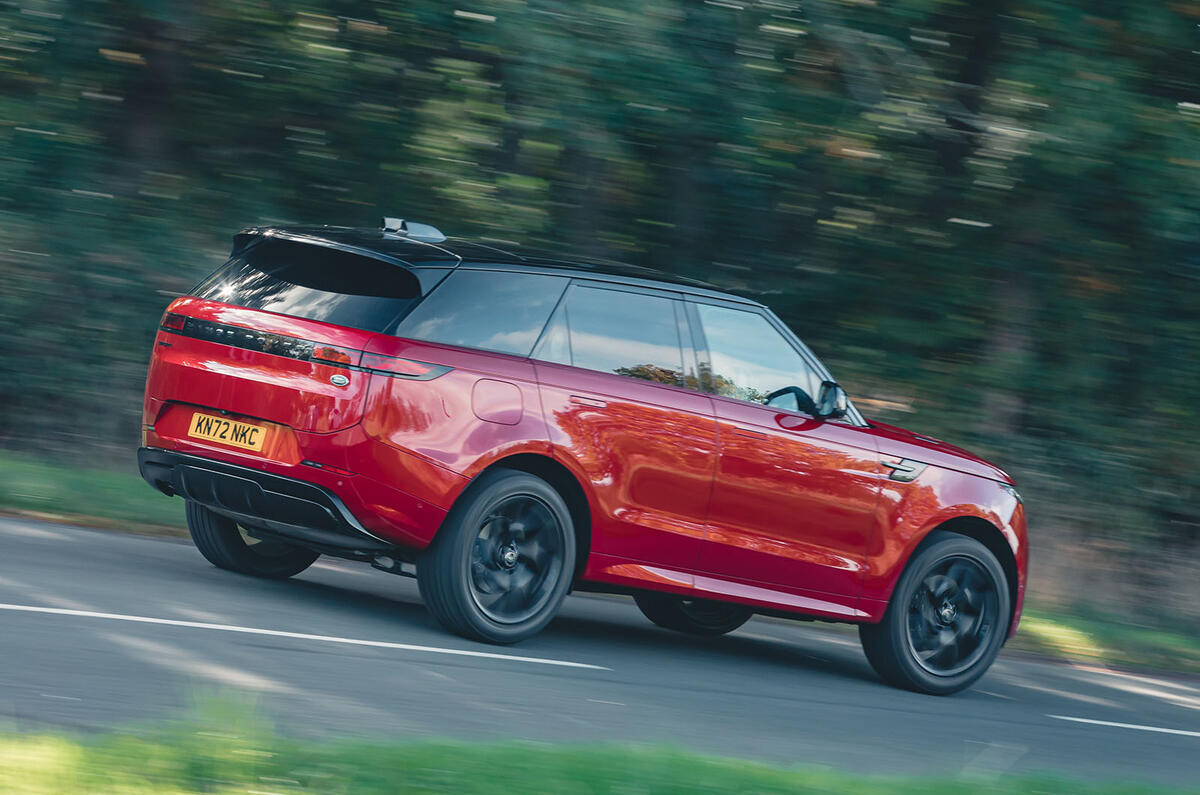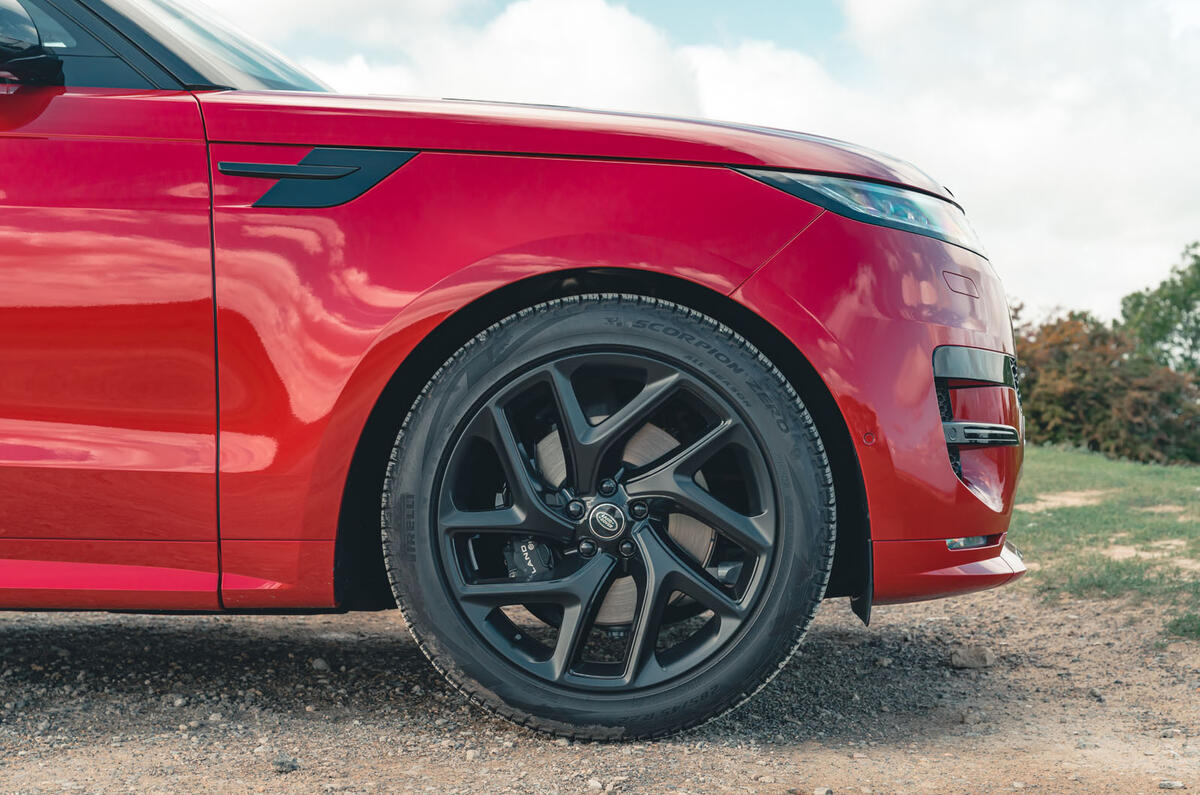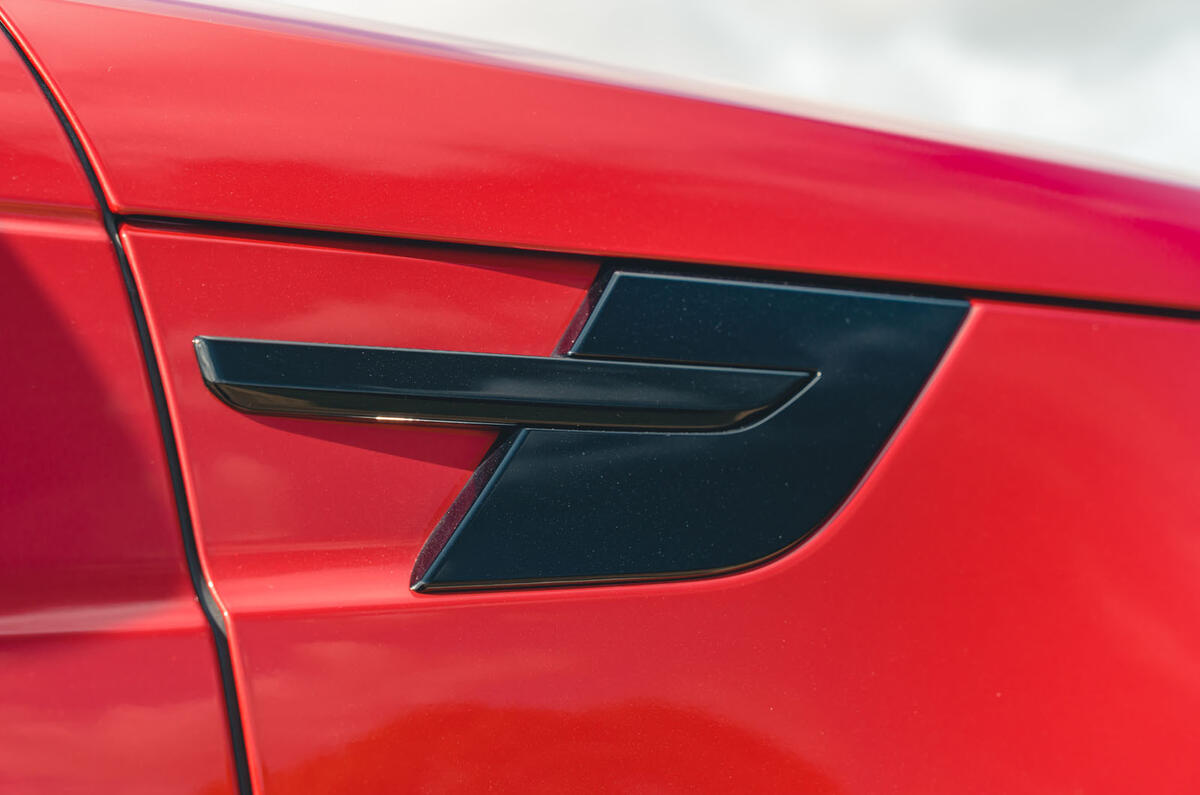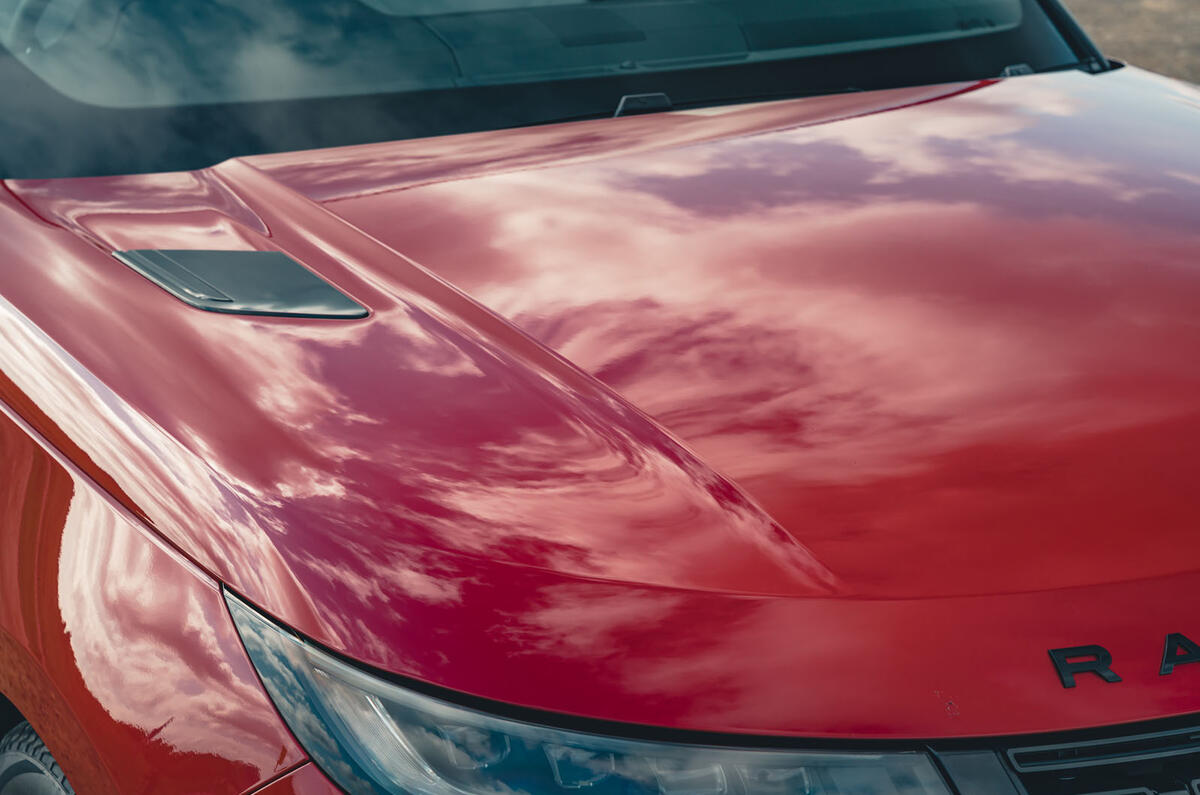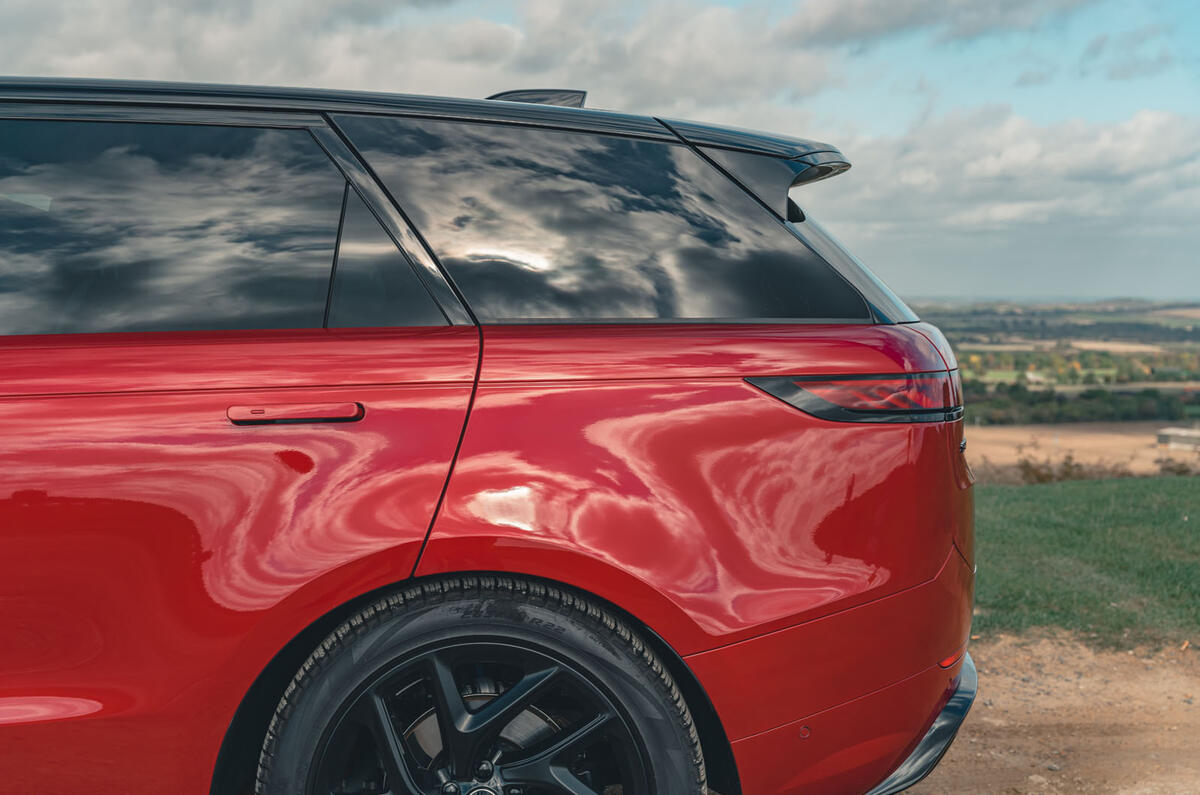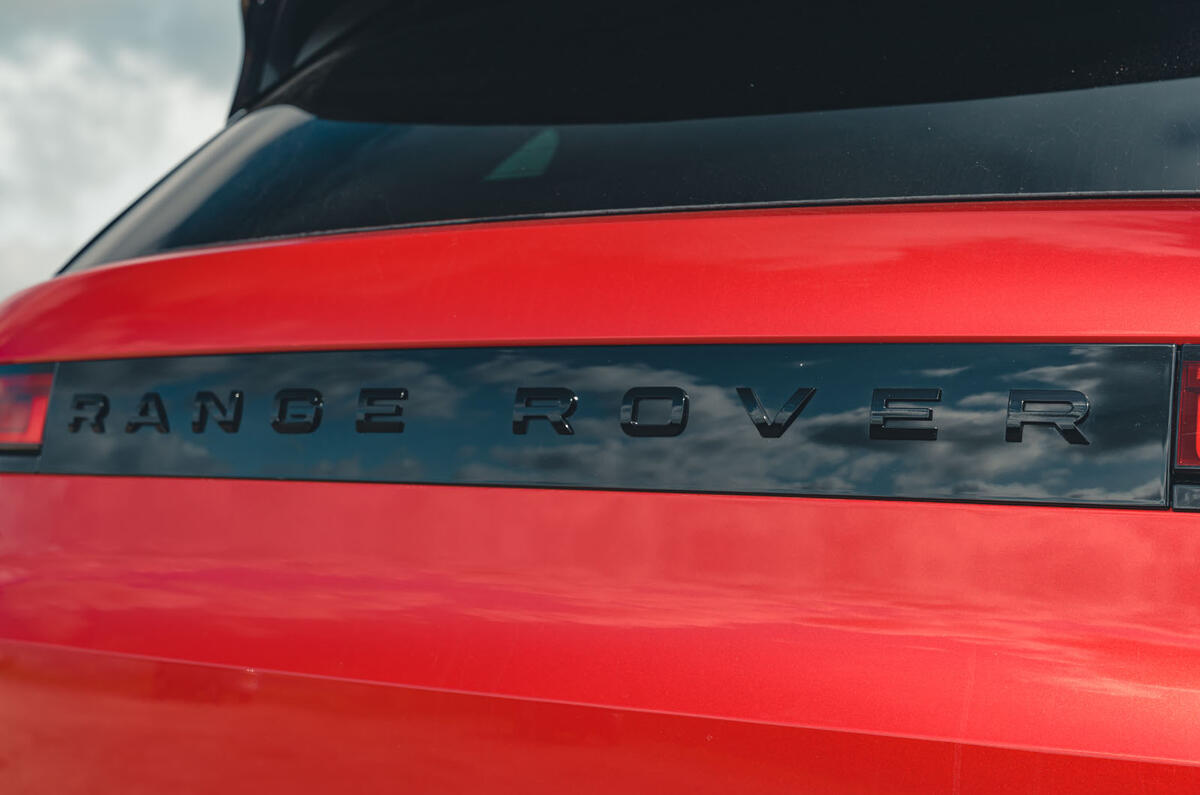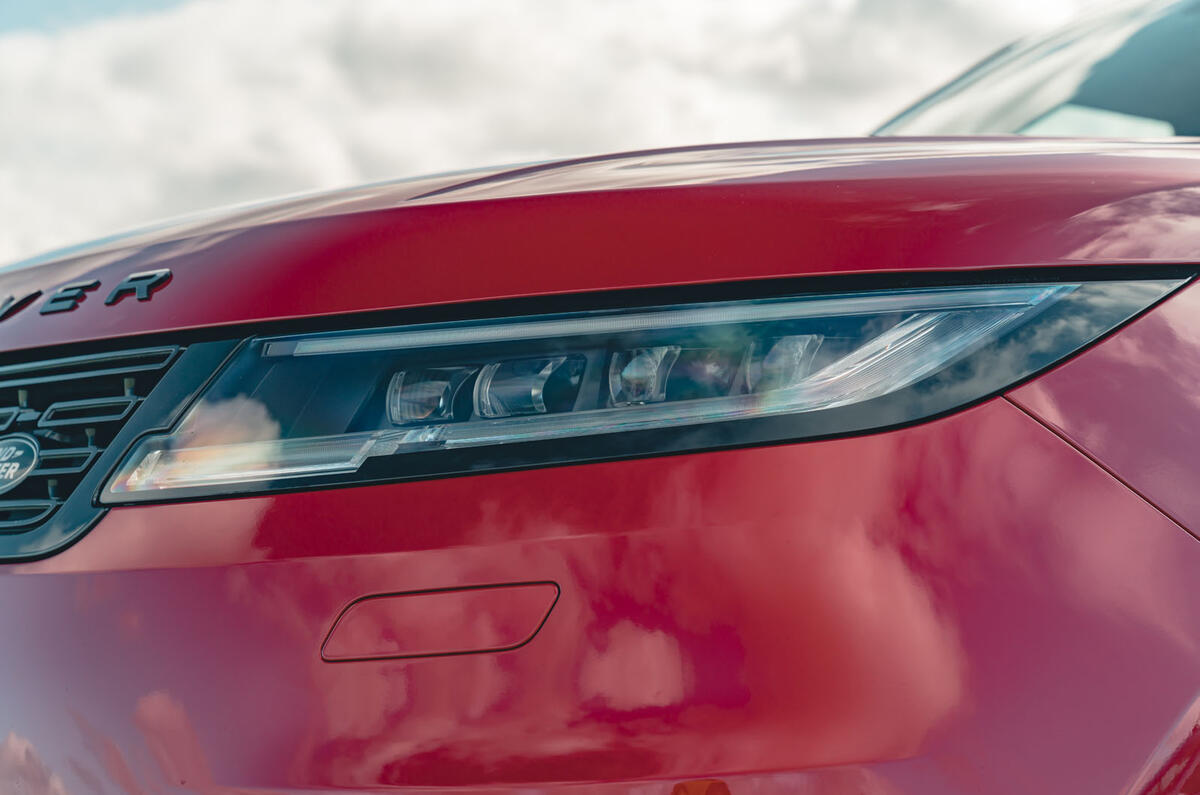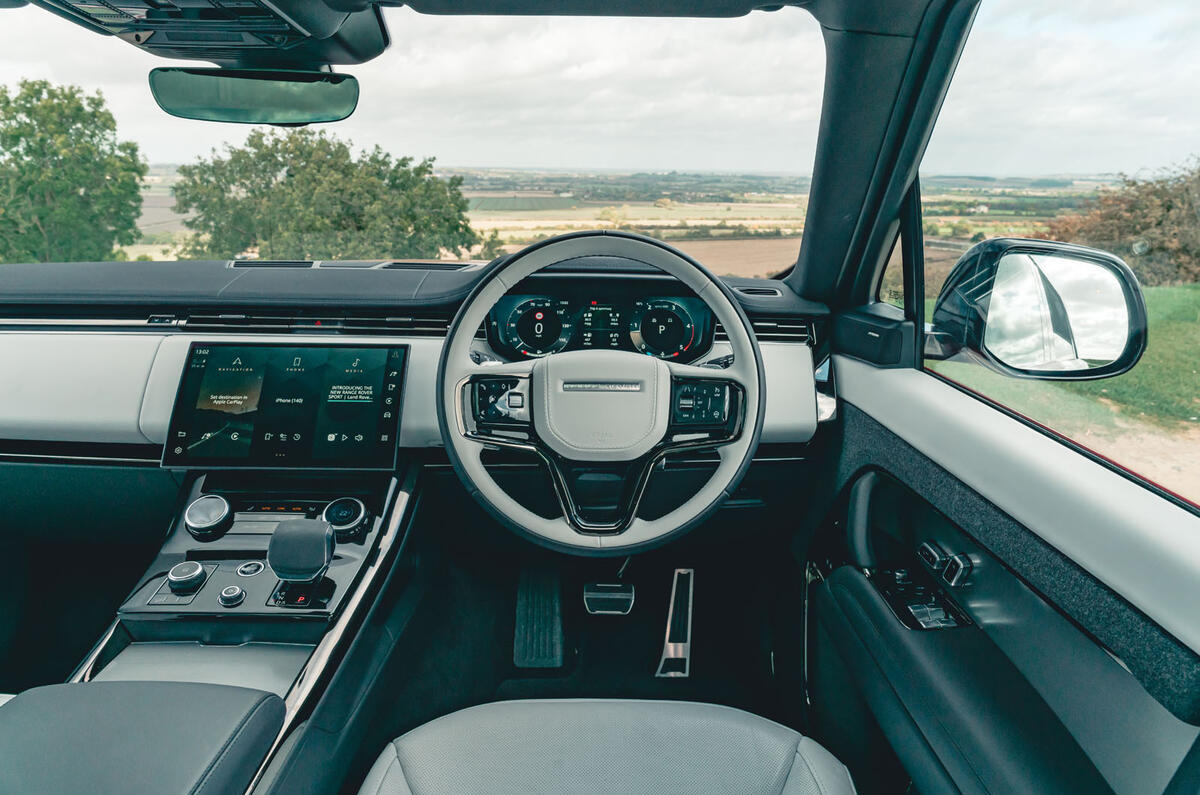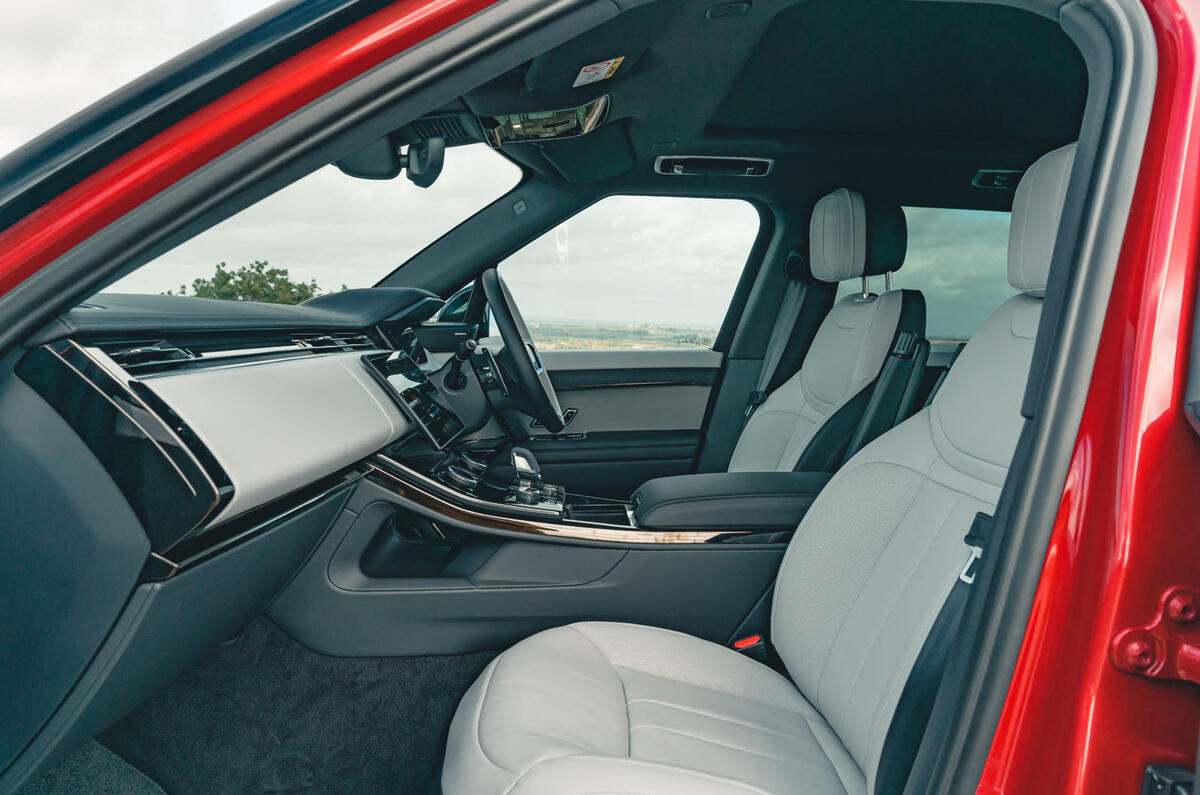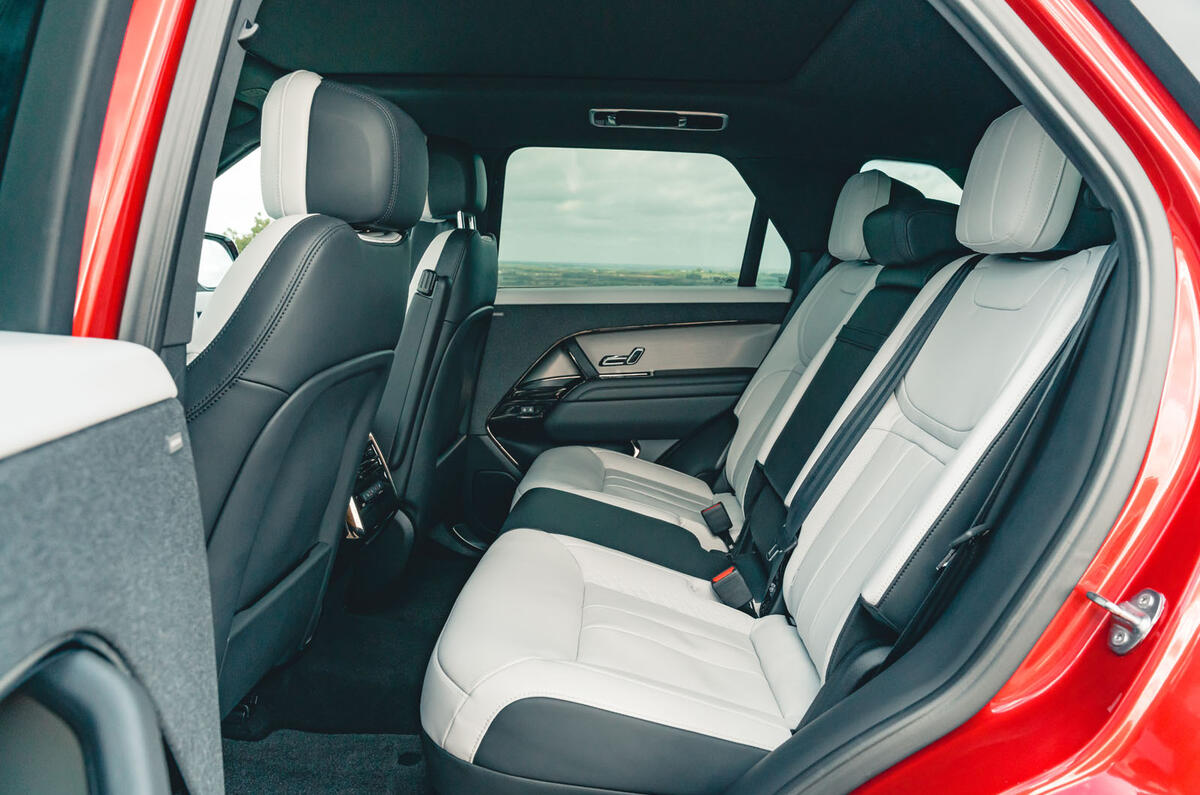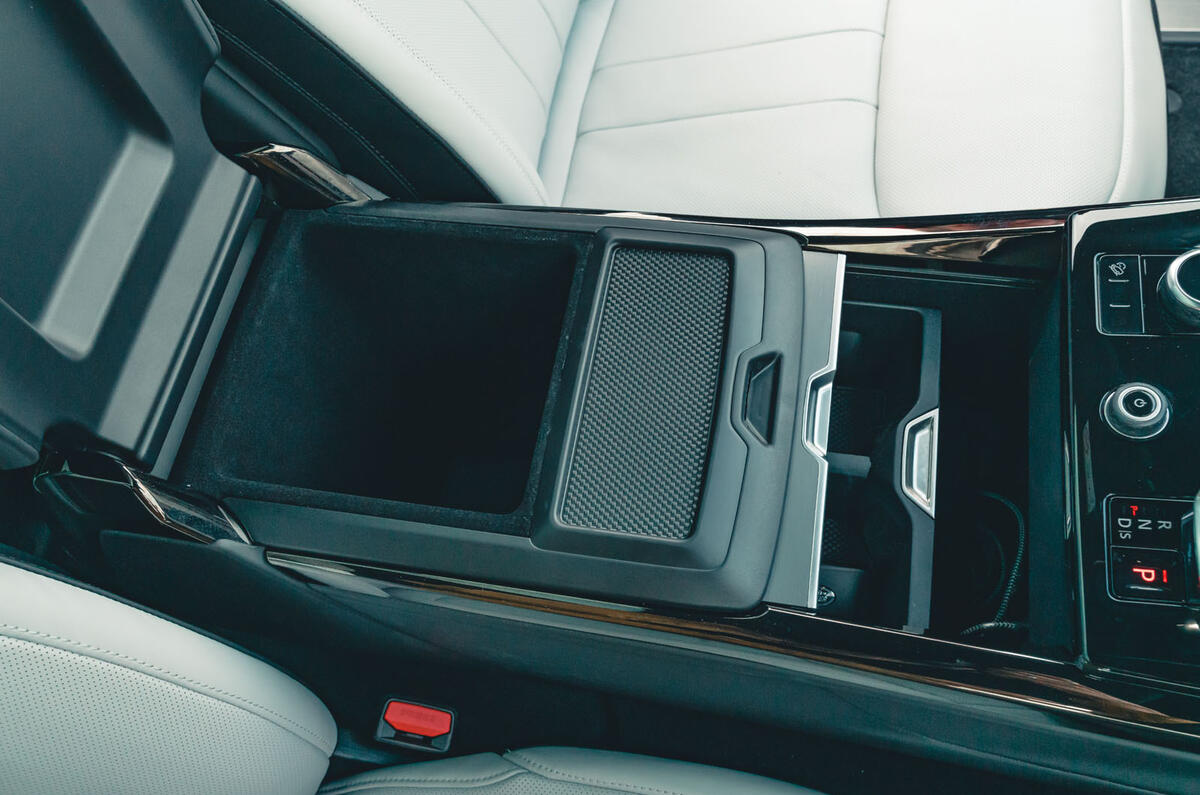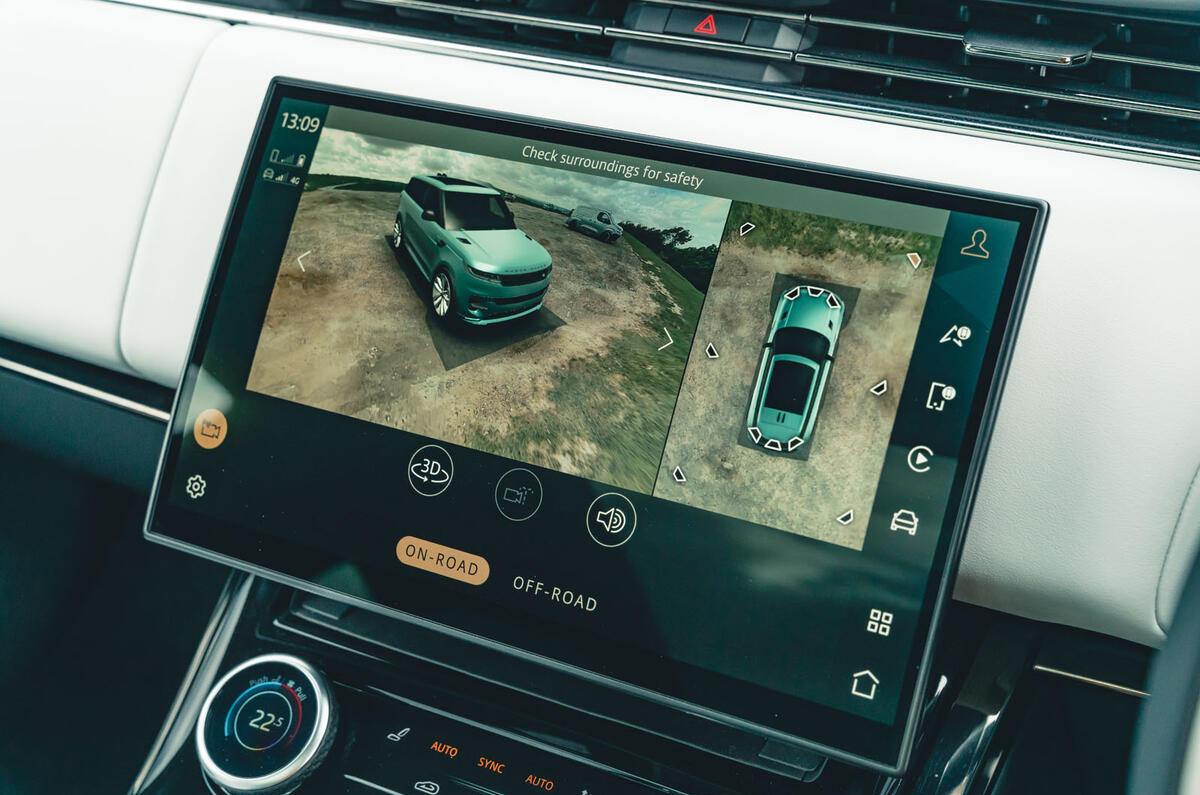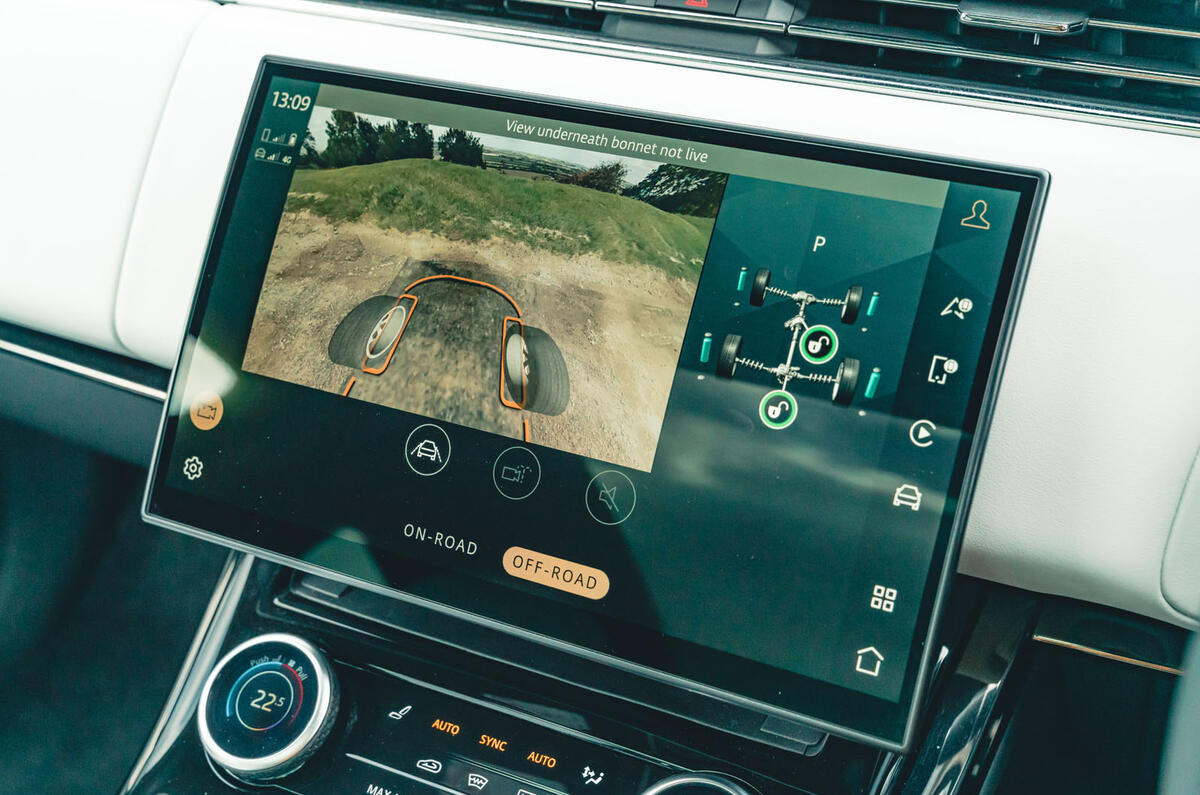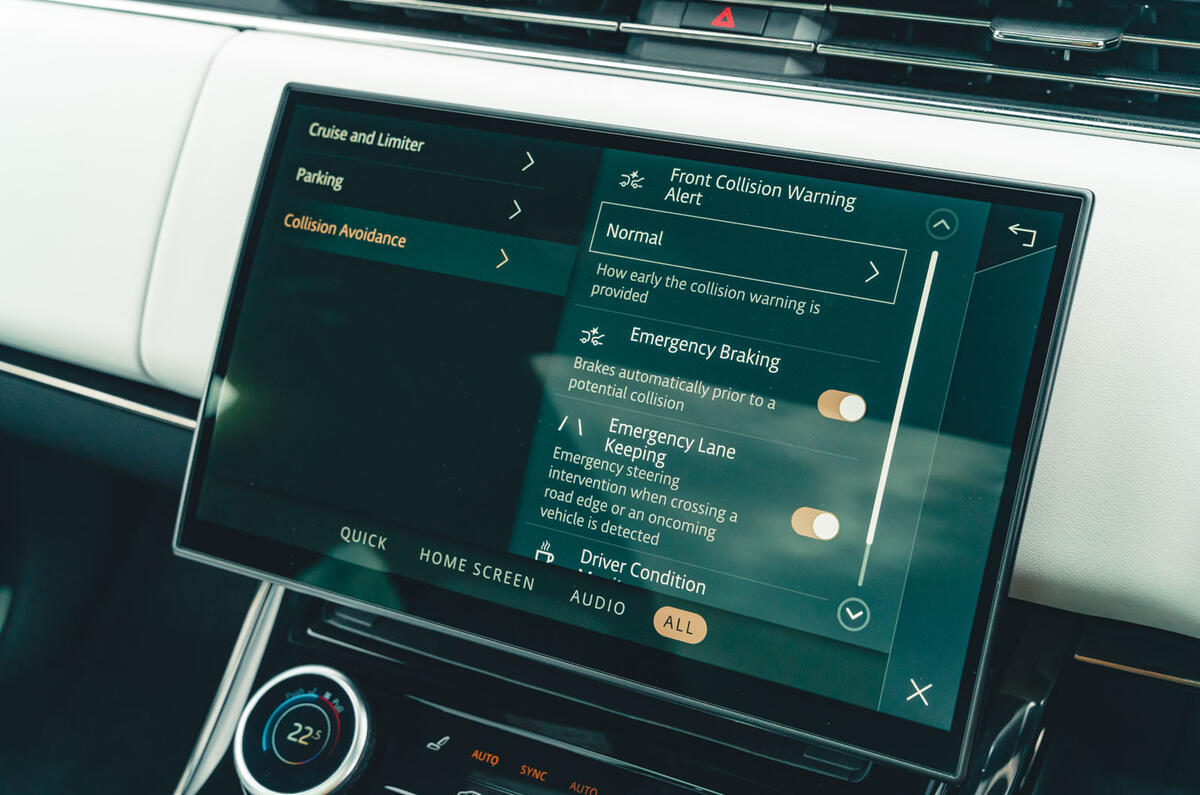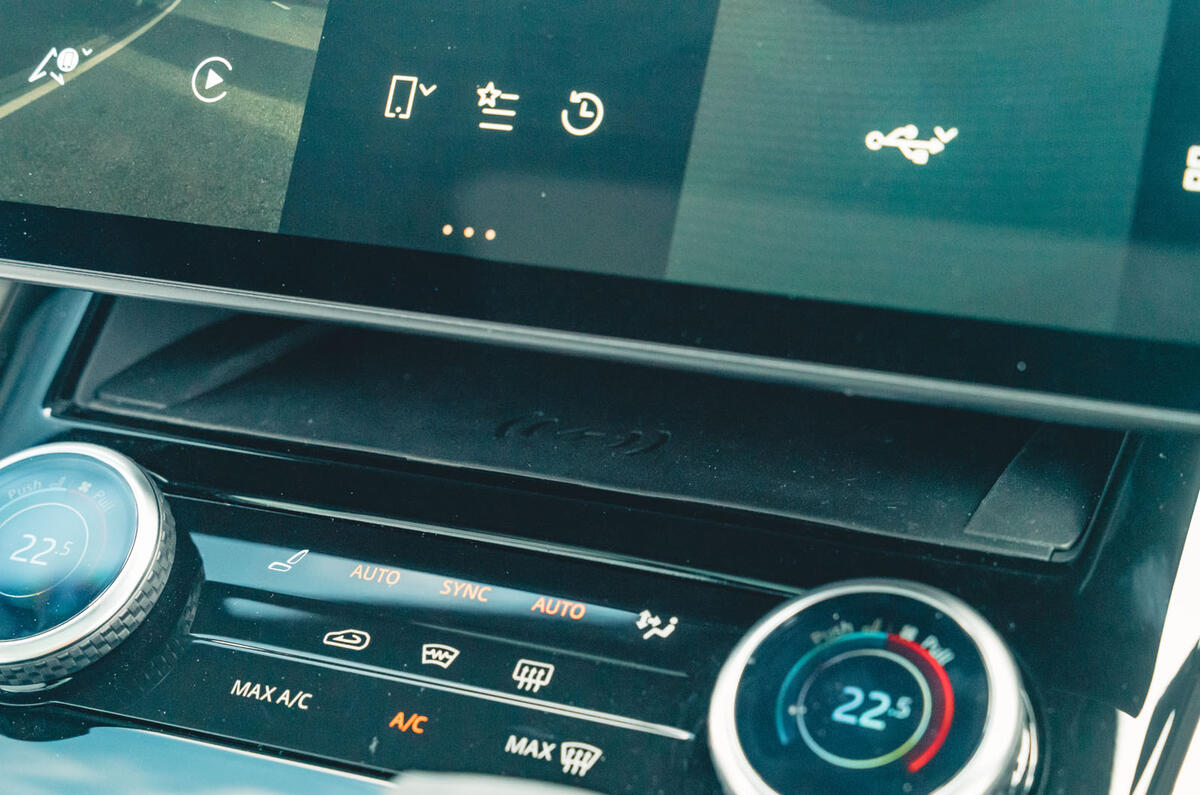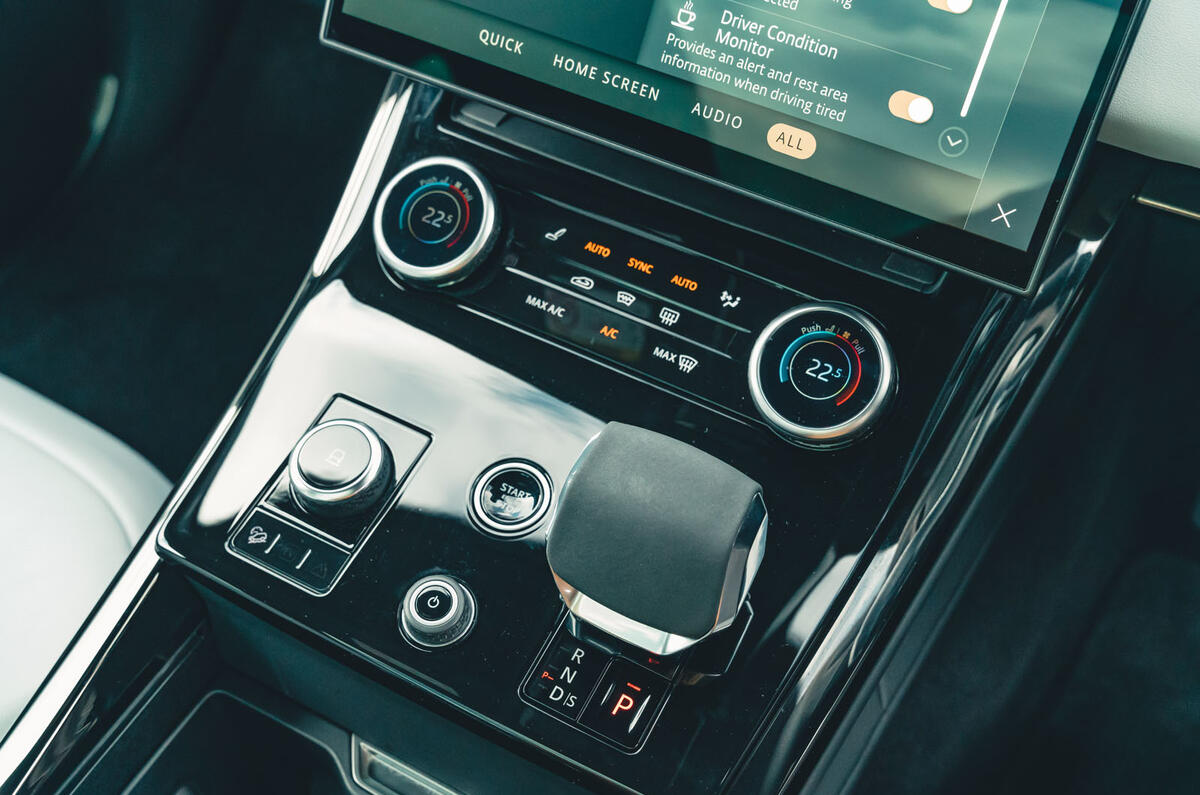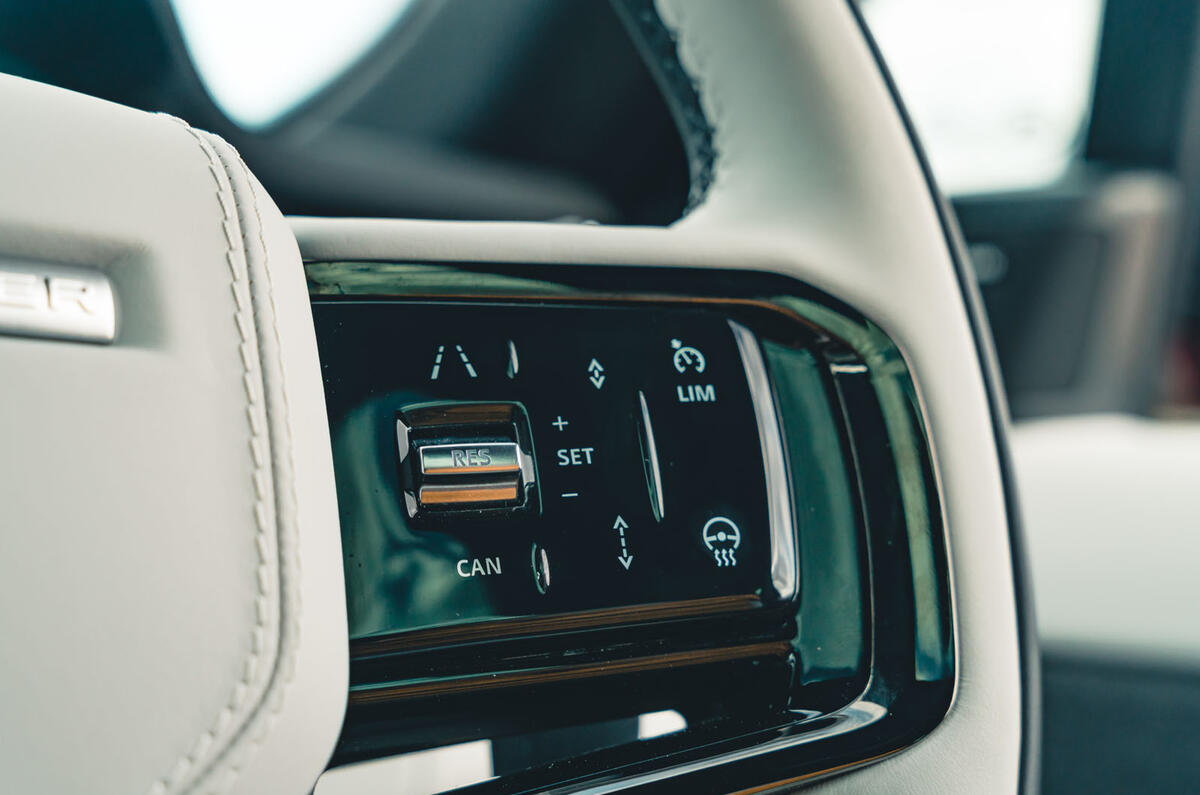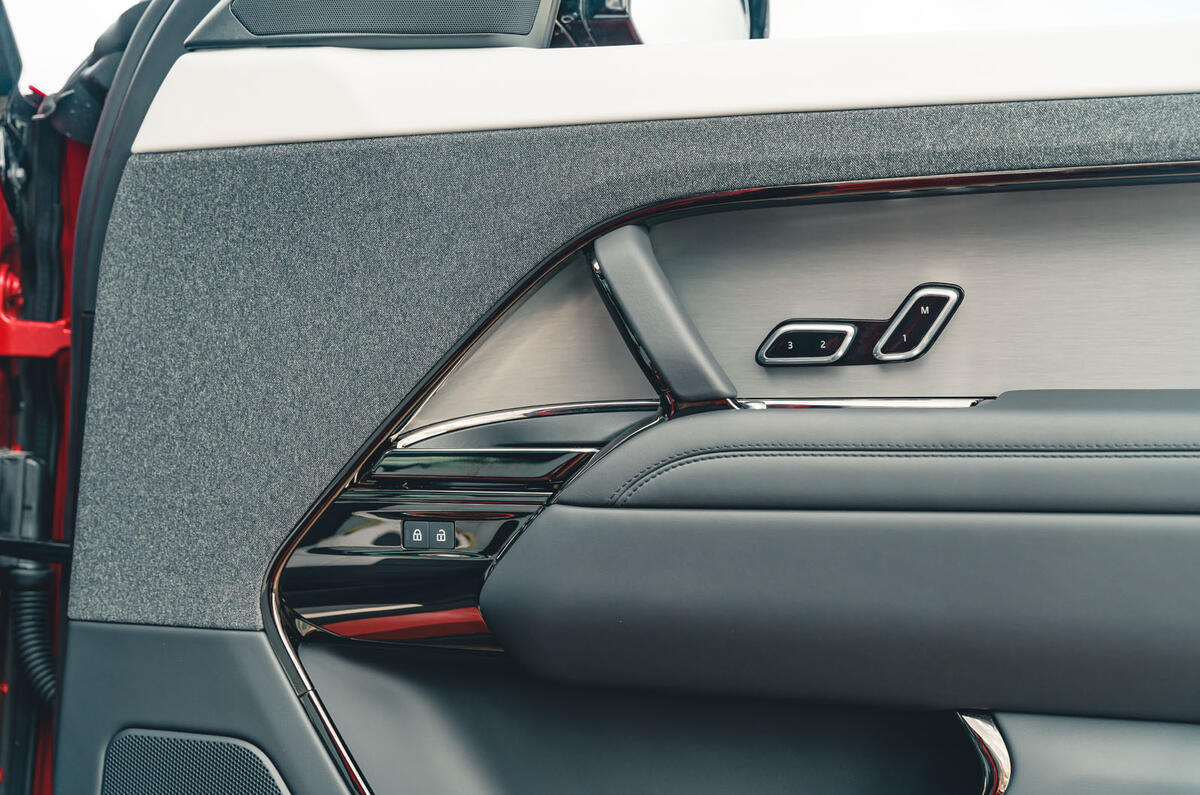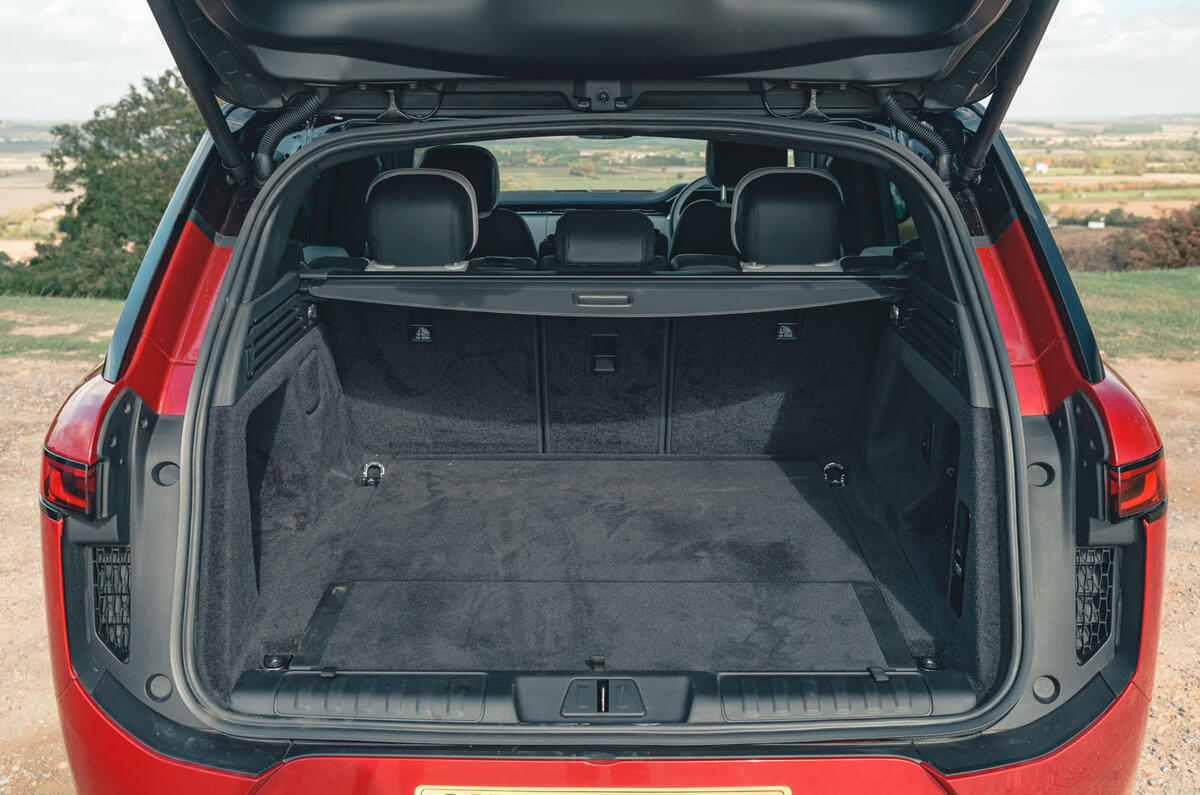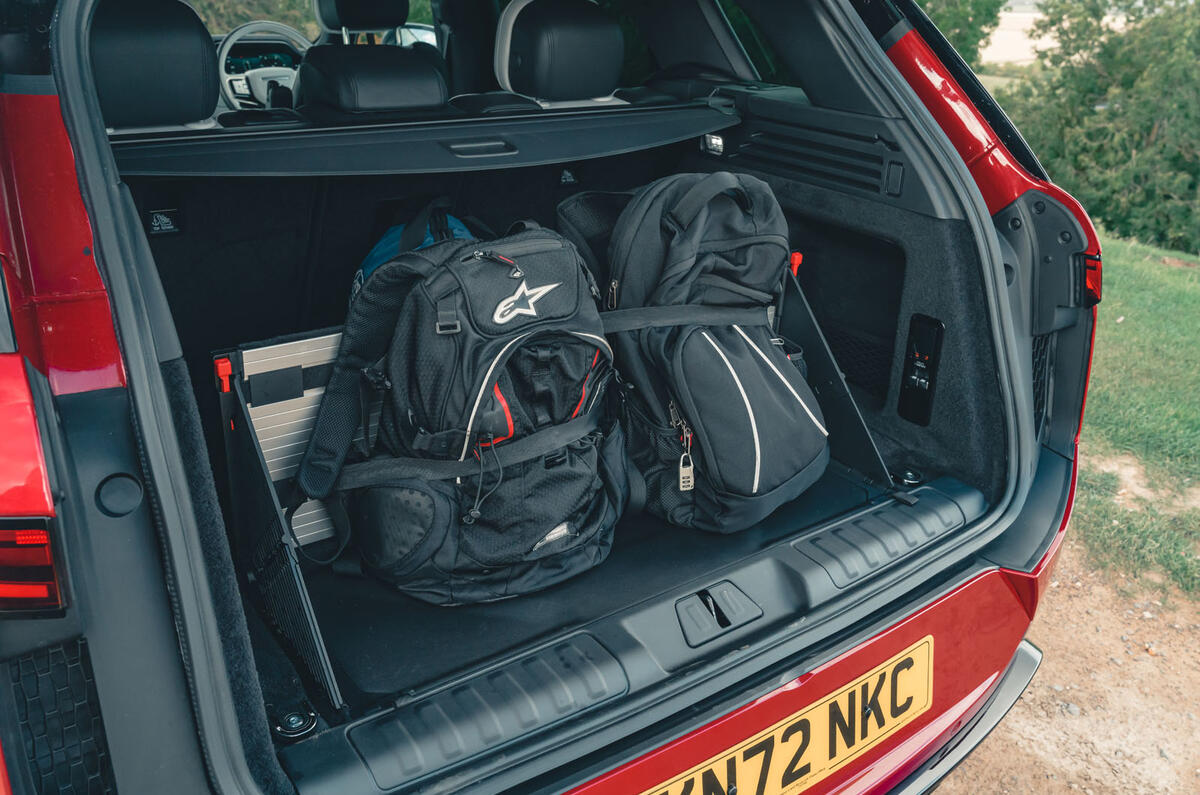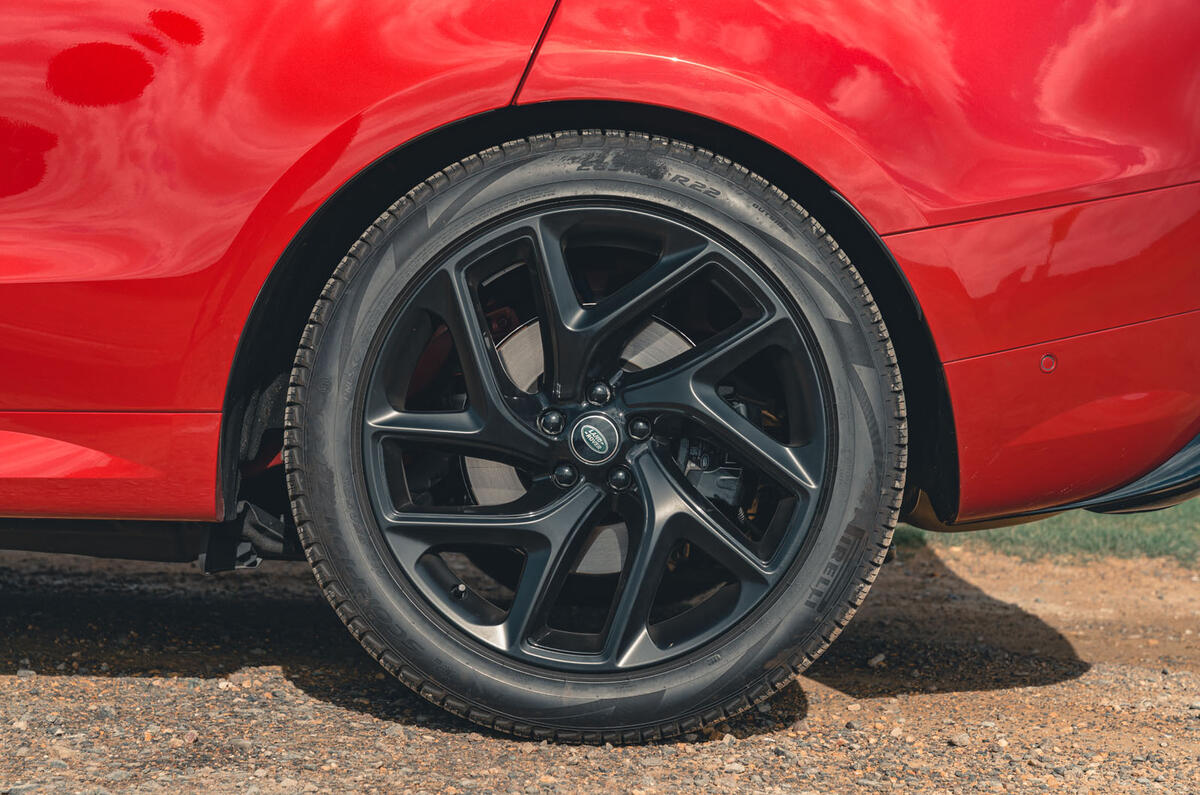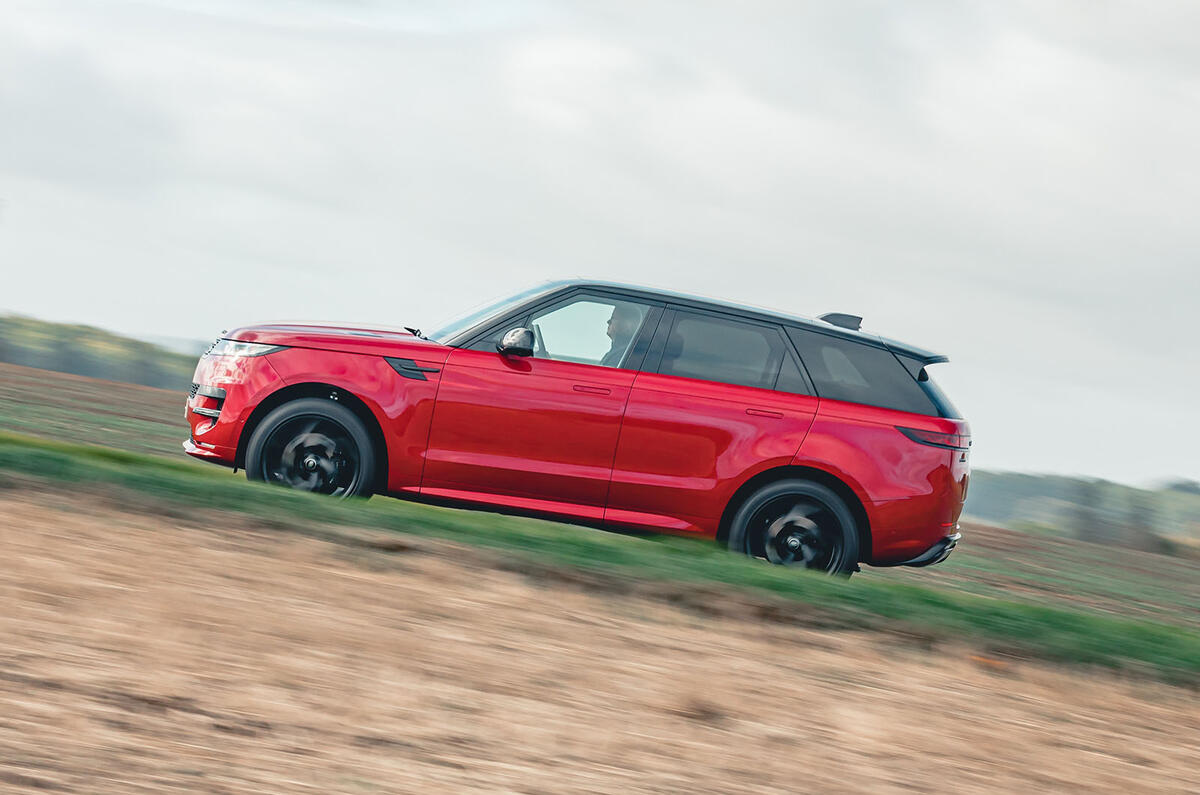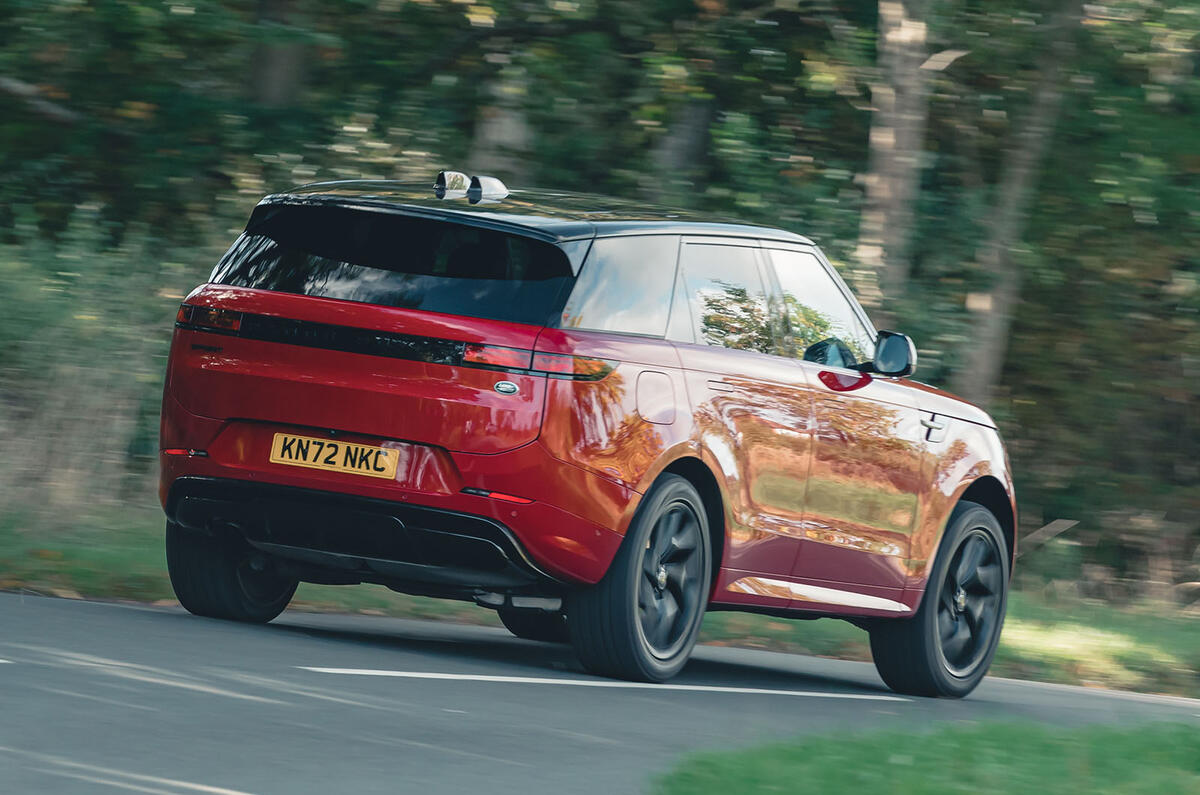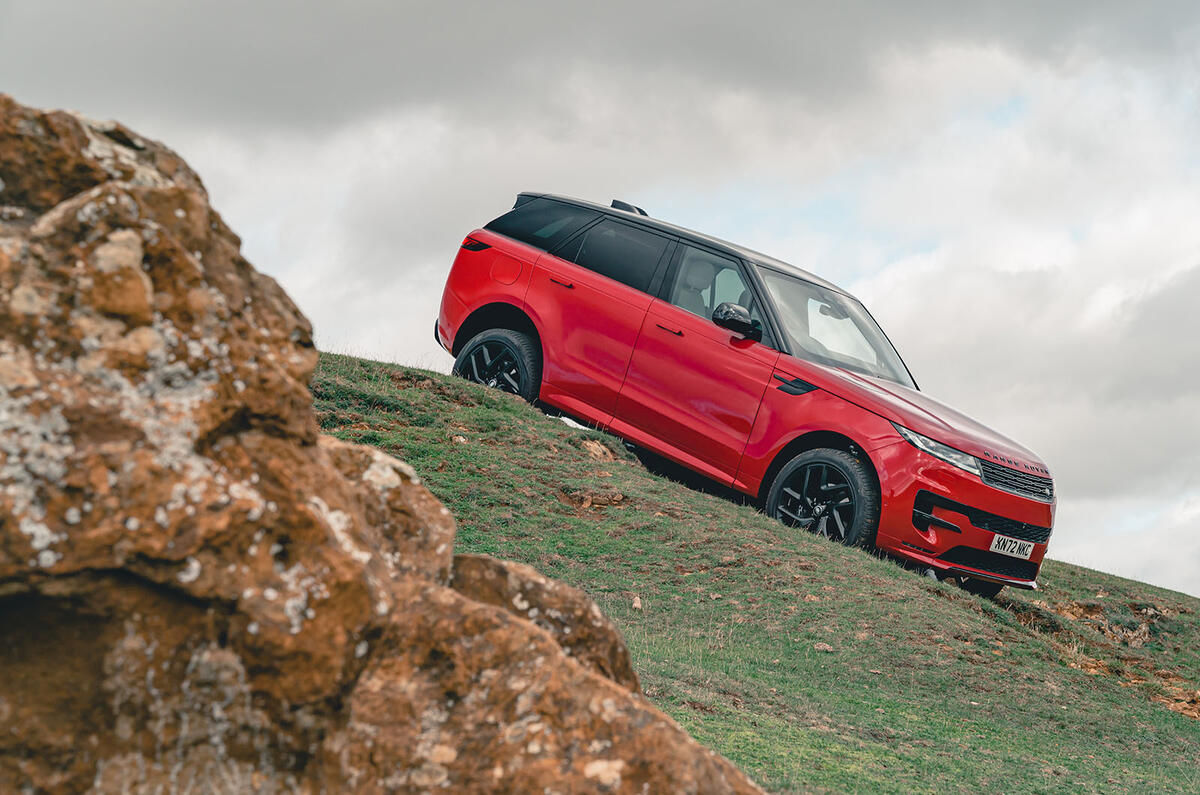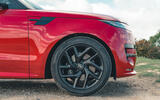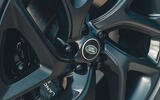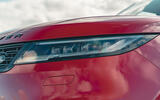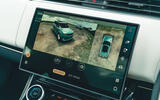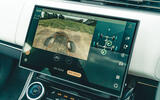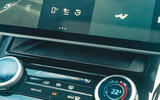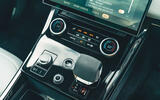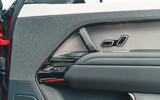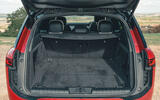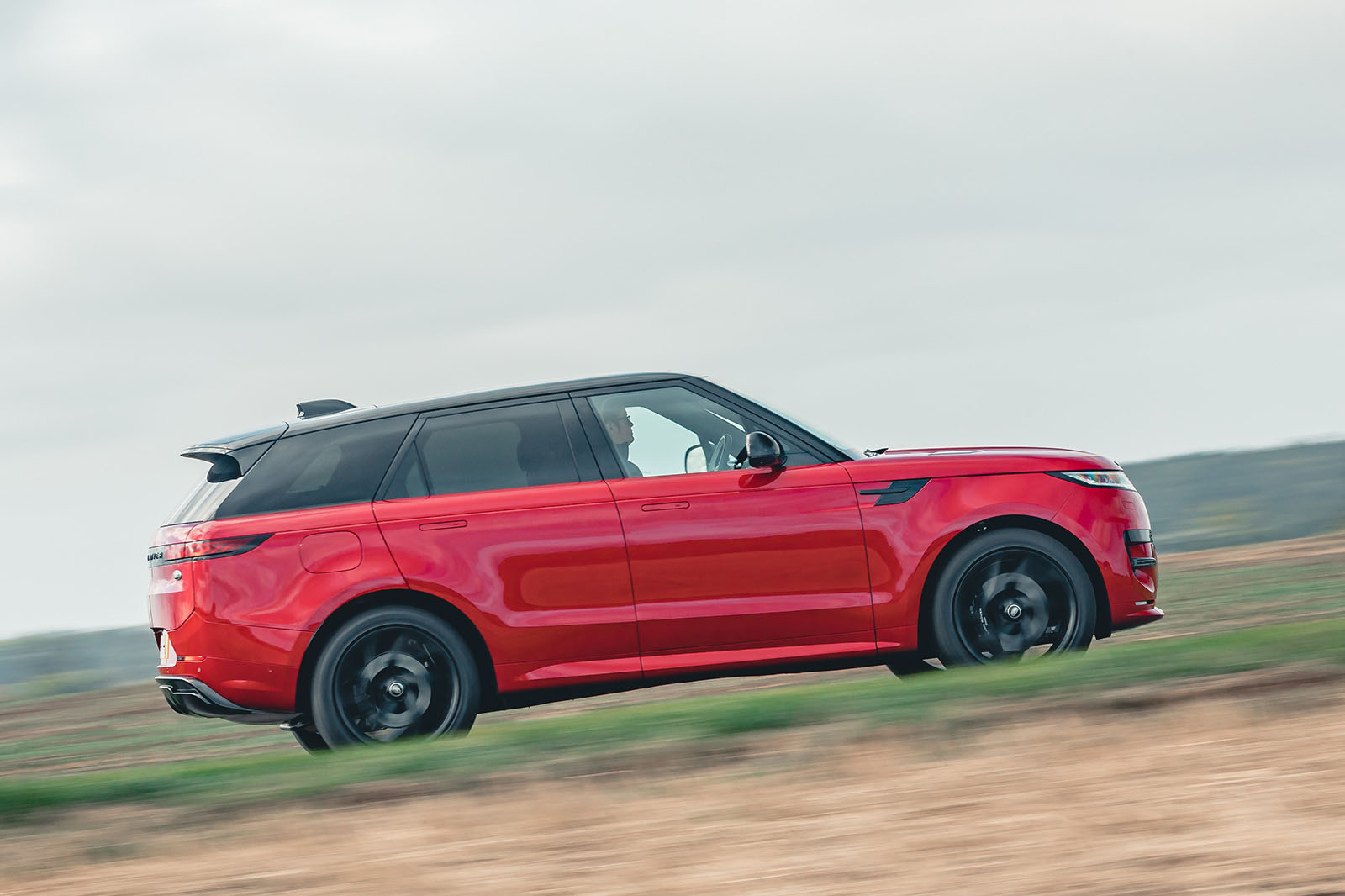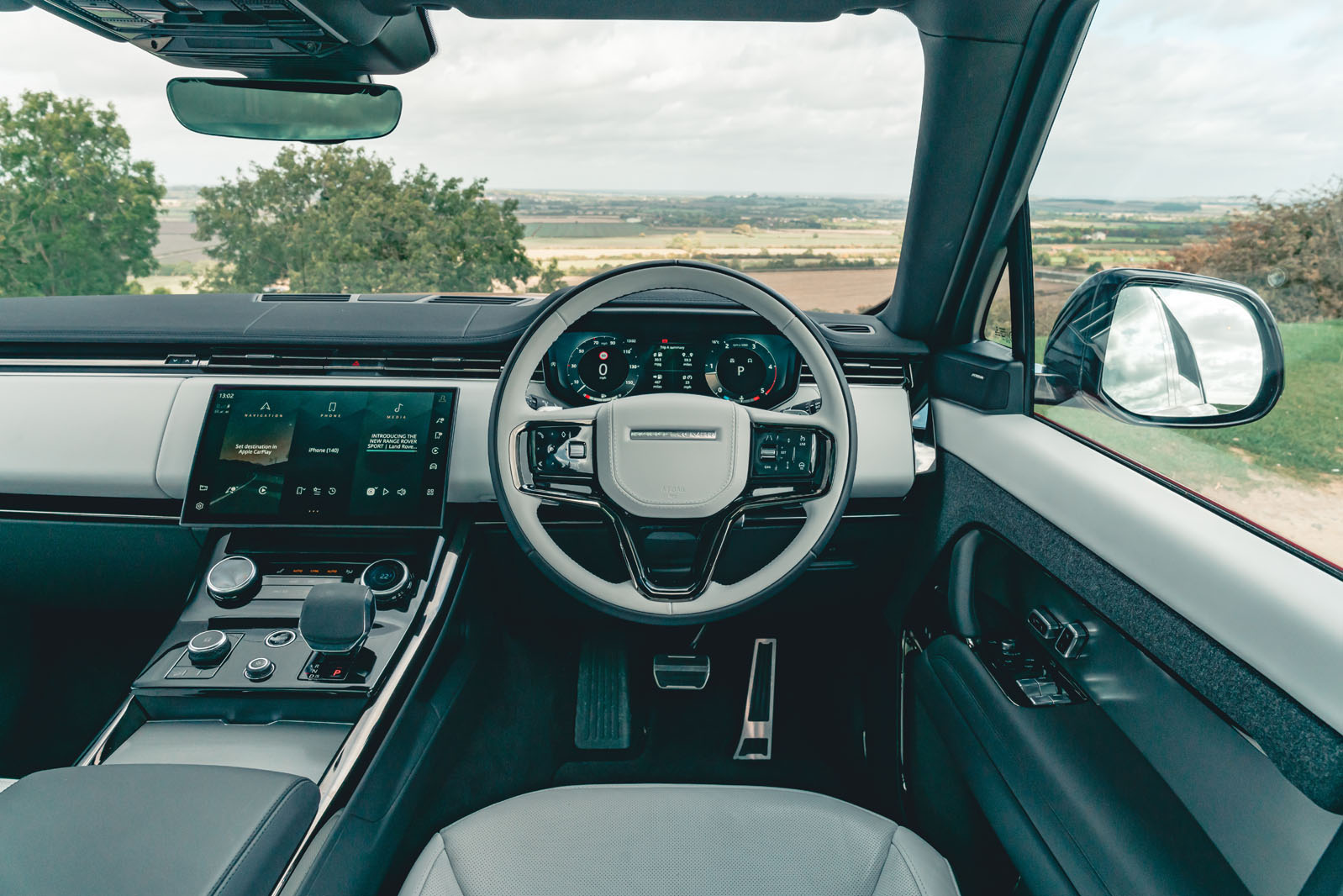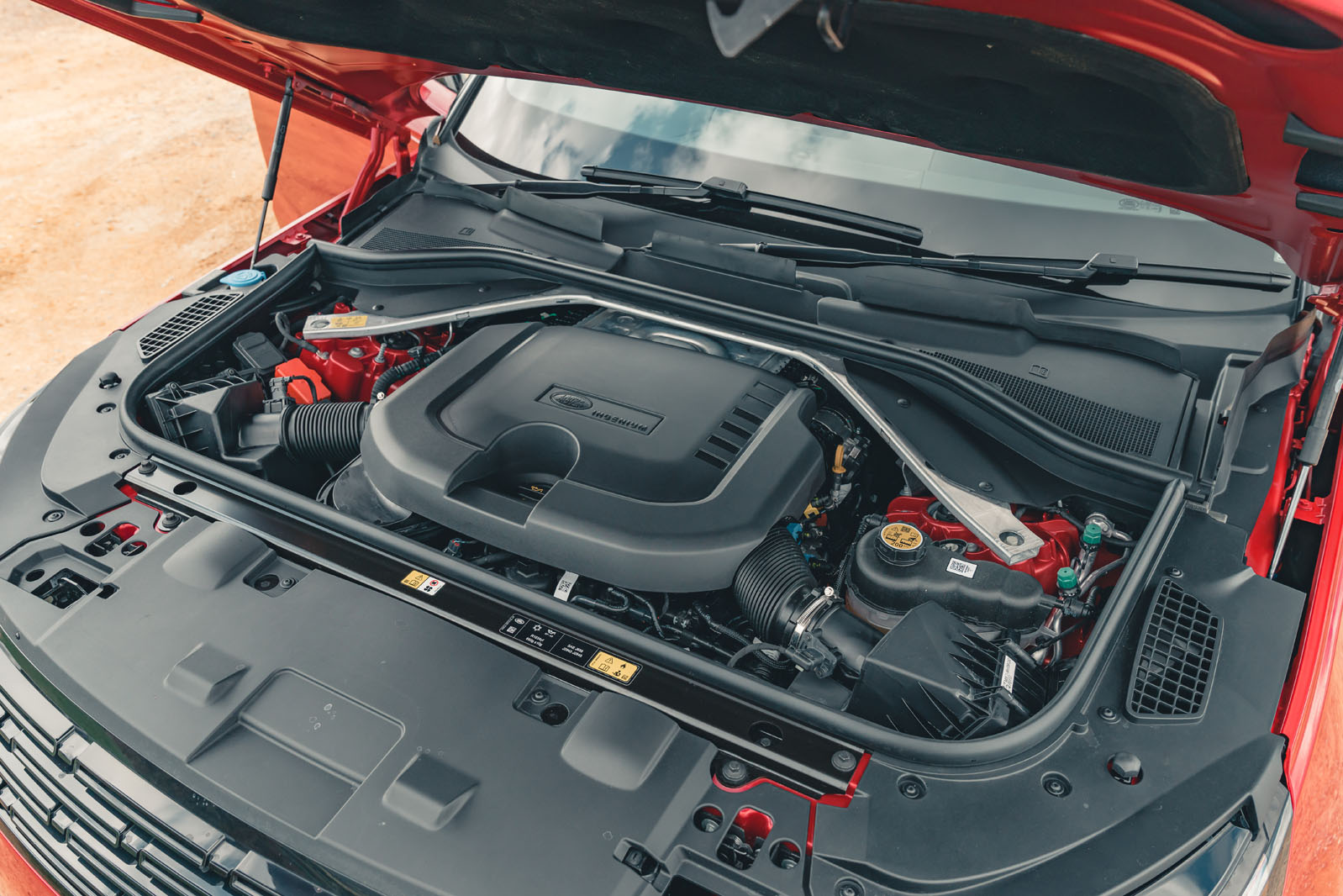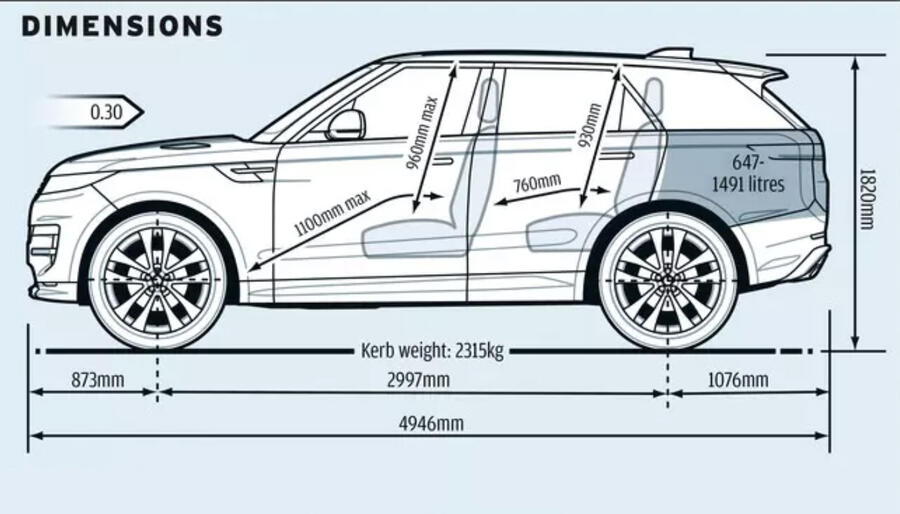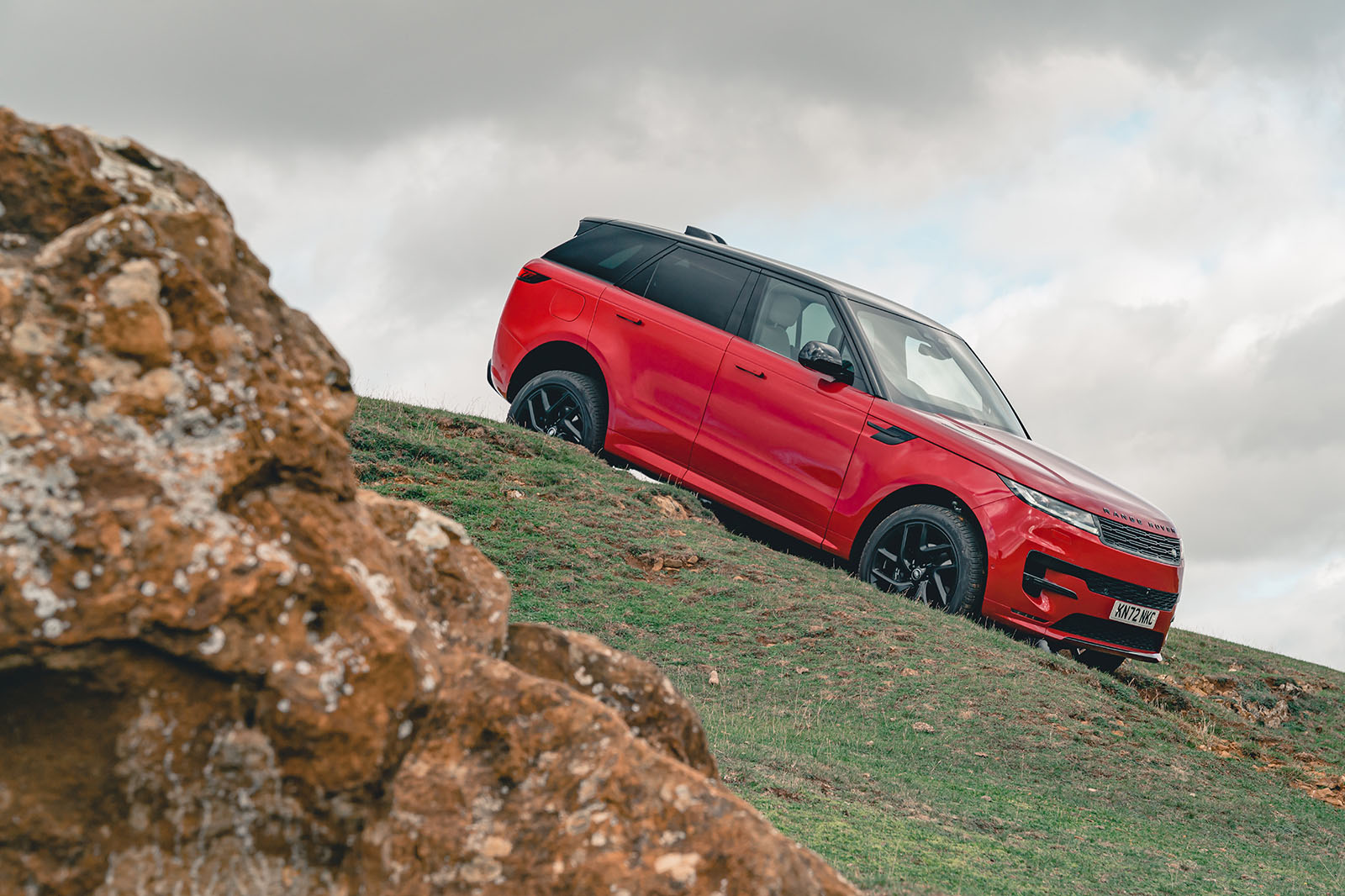Stepping up into the cabin reassures you that you’re boarding a ‘proper’ Range Rover here – and the plush material richness, the sophisticated digital technology and the sheer space that surrounds you once you’re settled in makes for an ambience that feels both super-modern and special.
The driving position is medium-high but still fairly recumbent, offering great all-round visibility but a certain understated sporting appeal. The high-rising centre console and door panels echo the sense that you’re sitting in, rather than on, the car, and protected from the outside world. There are touchscreen interfaces and digital screens where they’re useful, by and large, though some previous physical controls (heating and ventilation) should have remained that way. They're less easy to use on the touchscreen.
The size and aspect ratio of the 13.1in Pivi Pro infotainment set-up strike a good balance between display at scale and size for its own sake. It fills the centre of the dashboard without spilling over the transmission tunnel or into the front passenger’s living quarters and it’s well furnished with features.
The car’s standard of material quality is high but perhaps lacks quite the same level of tactile appeal that it has on the eye – in certain places. The gear selector, for example, feels just a little light and plasticky when you move it; the central display installation wobbles and squeaks a bit when you interrogate it; and the prevalence of shiny, easy-for-grubby-fingers-to-mark decorative trim around the transmission tunnel just takes the edge off the appeal of an interior that invites you in like few luxury SUVs on the market.
Space in the second row is generous for adults of average height, but the key distinction here is that while the bigger Range Rover is a car you might choose for chauffeuring, the Sport probably isn’t quite. For now, Land Rover won’t offer a seven-seat cabin layout on this car. Loading space is as abundant as you would hope and, as we measured it, competitive with key rivals (BMW X5, Audi Q8).
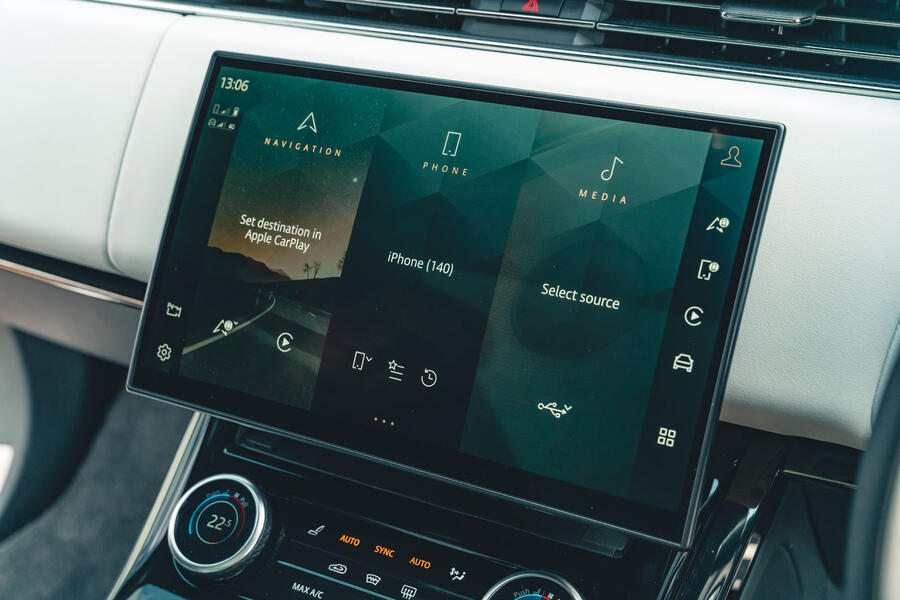
Infotainment
Land Rover’s 13.1in Pivi Pro touchscreen infotainment set-up really is a vast improvement on the old InControl system, and that it can sit in an £85k car (road tested in the UK) and offer every feature you would want proves the point powerfully.
The system has some haptic feedback features but isn’t like Audi’s equivalent in that it demands an annoyingly firm contact to register any input. It comes with two eSIMs for fully networked data connectivity, which needs to be extended by subscription after the first year.
Failing that, it also offers wireless smartphone mirroring for both Apple and Android handsets, and wireless charging, should you prefer to stick to the data connection you are already paying for. During our testing, it seemed a reliable connection, filling the aspect ratio of the touchscreen well.
The system offers Amazon Alexa voice control services built in as well. A 29-speaker Meridian Signature premium system, with as many as four headrest speakers, is on the options list, along with rear-seat entertainment screens.
The range-topping SV model comes with an updated infotainment system that integrates the car's physical heating and ventilation controls, which makes it a little harder to use.



